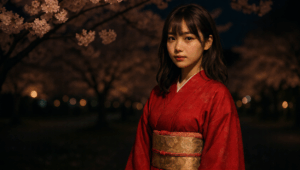Wabi-Sabi & AI: How Oribe’s “Beautiful Imperfection” Teaches Machines About Form
Wabi-Sabi & AI: How Oribe’s “Beautiful Imperfection” Teaches Machines About Form
English (Main, ~70%) — Humans often call something “beautiful” not because it is flawless, but because it breathes. Japanese wabi-sabi names this breath: a quiet, temporal, incomplete grace. In the tea world, Furuta Oribe—student of Sen no Rikyū—pushed this further. Where Rikyū cultivated stillness and austere harmony, Oribe embraced the delicious skew: bowls with off-center rims, uneven glaze, and a composition that resists symmetry. For humans, that asymmetry reads as liveness. For machines, it first looks like an error.
From Human Intuition to Machine Perception
Contemporary AI doesn’t “feel” beauty; it calculates patterns. Vision and generation systems reduce images to features: luminance histograms, edge maps, saliency, color complementarity, depth cues, and layout heuristics (rule-of-thirds, visual weights, and flow). Trained on massive datasets, models learn to optimize for statistically “pleasing” configurations. The outcome is often clean, crisp—and sometimes lifeless.
Oribe’s bowls problematize that statistical comfort. Their asymmetry trips symmetry detectors and layout priors. In numerical terms, they are deviations; in human terms, they are essence. Bridging that gap is where AI aesthetics gets interesting.
Encoding “Beautiful Imperfection”
- Asymmetry as Signal: Instead of treating asymmetry as noise, we can encode it as an aesthetic feature. Learned priors can reward controlled deviation—e.g., penalize perfect bilateral symmetry in contexts where “hand-made” is semantically intended.
- Temporal Patina: Wabi-sabi is time-aware. Sequence models and simulators can learn trajectories—aging glaze, weathered wood, light changes—so “beauty” emerges from becoming, not a single frame.
- Contextual Semantics: Attach cultural hints: “tea ceremony,” “Rikyū austerity,” “Oribe asymmetry.” Multimodal models that tie visual statistics to cultural text do better at choosing the right kind of imperfection.
- Noise that Breathes: Diffusion models allow controlled residual noise and non-uniform detail. The trick is to preserve micro-irregularities while keeping the whole composition coherent.
Rikyū & Oribe: Two Vectors of Taste
Rikyū’s tea values the silent, pared-down, and inward-looking. Oribe tilts toward daring form and lively distortion. In computational terms, you might think of Rikyū as a strong regularizer (simplicity prior), and Oribe as a calibrated perturbation (expressive prior). Beauty emerges where these priors meet: a stable base with intentional deviation.
Design Playbook for AI-Creators
- Name the Intent: Add prompt-level semantics: “hand-built, Oribe-inspired asymmetry, warm kiln traces, quiet room light.”
- Dial Imperfection: Use non-uniform subdivisions, uneven highlights, or glaze-like textures; avoid globally “perfect” grids.
- Let Time In: Introduce controlled aging or light drift—tiny scratches, softened edges, dust motes in sunshafts.
- Stage the Silence: Wabi-sabi needs negative space. Leave margins and let shadows speak.
要約(日本語)— ワビサビとAIの造形認識
人間は「整いすぎない形」に生命感を見出します。茶の湯では、千利休が静謐な侘びを極めた一方、古田織部は“歪み”や“ズレ”を美として前景化しました。AIは画像を特徴量(構図、彩度、コントラスト、奥行きなど)へ分解し、統計的に最適な構成を志向しますが、そのままでは“味わい”が抜け落ちがちです。
解決策は、非対称性を特徴として学習させる、経年や光の変化といった時間性を導入する、文化的文脈(茶の湯、美意識の語彙)を付与すること。ディフュージョン系モデルでは、ほどよいノイズや微細な手仕事感を残すことが鍵となります。
FAQ
Q1. Can AI truly “feel” wabi-sabi?
A1. 感情としては感じません。ただし、時間性・文脈・非対称性を特徴量として学習・生成することで、結果として“それらしく見える”表現には近づけます。
Q2. How do I prompt for Oribe-like asymmetry?
A2. “hand-built asymmetry, Oribe-inspired tea bowl, uneven glaze, kiln marks, warm shadowy light, negative space” のように、意図的な不均整と環境光を明示します。
Q3. What’s a quick design checklist?
A3. ①非対称を一箇所入れる ②余白と影を確保 ③微細な経年表現 ④色数を絞り粒度を残す—の4点で十分に“息づき”が出ます。
Explore more AI-driven arts on Phantom Tone.
Tags: wabi-sabi, Furuta Oribe, Sen no Rikyū, Japanese aesthetics, AI aesthetics, generative AI, diffusion models, computer vision, tea ceremony, Pha


